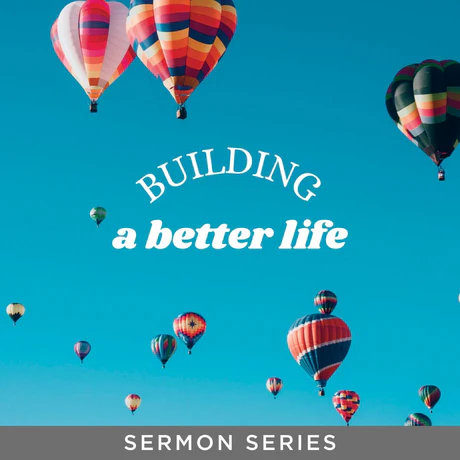FellowshipPreaching/TeachingLeadershipCelebrate RecoveryDiscipleshipSmall GroupsEvangelismWorshipMinistry
The 10 Most Influential Churches of the Last Century

At some level, all Christians want their churches to be influential in carrying out the work of God. One pathway to increased influence is a road we often overlook – the one behind us.
Looking back can be good. It can give us wisdom and perspective. It can also help us look forward to what God is doing next in your churches and ours.
This helpful book looks back at ten historic spiritual shifts of the last century and identifies a church closest to the center of each one. You may not have heard of these pioneering churches and their leaders, but we suspect you have been influenced by them far more than you realize. And we strongly suspect that after reading each of their stories, you’ll be glad you did – and you’ll have a better perspective on your own church and how God is at work in and around it.
It is hard to imagine anyone more qualified to identify and describe these trends and the personalities behind them than our friend, mentor, co-author and fellow researcher Elmer Towns. Starting in the 1960s he became the nation’s leading figure in creating “top 10” lists and narratives about influential churches. Both of us have a shelf full of his books and magazine articles that we’ve underlined and dog-eared, gaining important insights about where we’ve come from and therefore where we’re headed.
His motive in this book is to help expand your impact. As he was formulating the idea for this book, emailing us with his thoughts, it was very clear that he believes the most influential churches in the last 100 years can motivate every church to become a church of greater influence. Even his title, The Ten Most Influential Churches of the Past Century, is designed to capture people’s attention and help them become more influential.
At some level, all Christians want their churches to be influential in carrying out the work of God.
Overview of the Top Ten
The first chapter is about the Pentecostal/Charismatic movement. Even if you don’t identify with that approach to Christianity, you need to know that roughly one in four people globally who claim to follow Jesus Christ identify with it. That explosive growth has occurred in just over 100 years. The Pentecostal movement began with a few churches (usually on the other side of the tracks) that appealed to a marginal population. Mainstream Christianity labeled them such terms as fanatical or excessive. Some called them weird or heretical—or much worse. It all went viral when a 1906 revival broke out in an Azusa Street mission church located among the poor in Los Angeles, California. Visitors came from all over the world to be touched by the Holy Spirit, and then went back launching Pentecostal/Charismatic denominations/movements that in turn touched the world. Today, some of the largest congregations in the world are Pentecostal driven (see Warren’s list at www.leadnet.org/world). A second greatest phenomenon in the last 100 years has been the explosive growth of house churches in Communist China. When the bamboo curtain slammed down in 1958, many Westerners thought the light of Christianity would be extinguished and all the missionary work for hundreds of years would be lost. However, we’ve learned in recent decades that one of the greatest church movements in the world has been the underground church in China, multiplying exponentially without foreign mission supervision, Western missionaries, seminaries, denominational structure, or even buildings. They have none of the physical assets we find in American Christianity, yet the world marvels at what God has done. A third trend in the Christian church has been the growing interactions of people, leading to multicultural and multiethnic churches around the world. After World War II, the restrictive borders in most nations came down, and the church entered the era of the Interstate and the Internet (i.e., the Interstate stands for an explosion in transportation, while the Internet stands for explosion of communications). People from various cultures that make up the many nations of the world have travelled extensively, and most of the churches have thrown their doors open to win any and all to Jesus Christ. While America has struggled to overcome its background of slavery and segregation, many churches have led the way in modeling worship that welcomes every tribe, nation, people and language (Rev. 5:9) so that what the children sing in Sunday school is true: “Red and yellow, black and white, all are precious in His sight, Jesus loves the little children of the world.”Looking back can be good. It can give us wisdom and perspective.
A fourth phenomenon is the largest church in history, the Central Full Gospel Church in Seoul, South Korea. In 2007, the church reached 760,000 members when its pastor, David Yonggi Cho, retired and turned the reins over to a second-generation pastor, Yong-hoon Lee. This church was not built on massive evangelism in large meetings; or through radio, television, or the media; or even through evangelism experienced in the church services of its home on Yoido Island. Rather, 35,000 small groups located in living rooms, laundry rooms, restaurants and apartment building exercise rooms have produced unparalleled growth and influence around the world. Yonggi Cho has said, “Just as the physical body grows by the division of its biological cells, so the spiritual body of Jesus Christ grows by the division of its spiritual cells.”
The fifth chapter describes the exponential growth of the Southern Baptist Convention, which grew from a small denomination located primarily in the southeast United States in 1900 to become the largest Protestant denomination in America. While many contributing personalities and policies are responsible for the growth of Southern Baptist, the most illustrative example is the First Baptist Church in Dallas, Texas, where Dr. W.A. Criswell motivated and organized lay workers of a large wealthy downtown church to build the biggest church in America through Sunday school visitation. They expanded their Sunday school classes, and as a result the church grew.
A sixth trend among churches is reflective of the ever-expanding educational growth in the United States as well as throughout the world. A history of preaching reveals that most sermons were devotional, motivational, and/or topical three-point messages followed by a poem. But C.I. Scofield might have been the man who changed the focus of sermons.
When Scofield edited the footnotes of the Scofield Reference Bible, it became one of the biggest sellers in America and across the English-speaking world, selling more than 2 million copies in 30 years. The Scofield Reference Bible became one of the most influential books of evangelical Christianity in the last 100 years. It gave international fame to Scofield as a Bible teacher who visited the great Bible conferences of the late 1800s and early 1900s to teach the Word of God. He then brought an educational methodology to his pulpit in Dallas, Texas. His Bible expositional teaching became a standard at Dallas Theological Seminary, and it influenced a large section of the evangelical world to use the Sunday morning sermon not as a motivational pulpit, but to teach the Word of God.
A seventh church to influence evangelicalism was not designed for Christians but for the unchurched. Bill Hybels designed a church service where those who did not have a church background would be comfortable and have the gospel presented to them with contemporary music, drama, and messages all found within a contemporary environment. This church coined the phrase “seeker services,” where an unsaved person could seek God in the integrity of his or her pursuit. Many thousands of pastors visited the Willow Creek pastors’ conferences and went home to duplicate the influence of the church.
Every church leader should read the stories of these 10 churches and compare their own experiences to these trends.
An eighth trend traces the growth and worldwide influence of what some call praise-worship music. Church historian Kenneth Scott Latourette said that whenever there was a true revival among God’s people, inevitably there was also a new hymnody—the revived church praised the Lord with music expressing its own genre. In each revival, believers sang to God with the music they sang in their normal lives. No one can doubt the explosive influence of praise-worship music across the churches of the world, and no church better reflects that movement than a church in Sydney, Australia, that changed its name to Hillsong – since its music label was so widely known. Darlene Zschech, worship leader for the church, brought tears to the eyes of many as they sang, “My Jesus . . . my Savior . . . shout to the Lord.”
A ninth trend is the church embracing advertisement, marketing, and media to carry out its strategy of evangelism and communicate its message to the masses. Beginning in approximately 1900, many churches embraced a radio ministry. Continuing into the 1950s, many other churches embraced television ministry. Perhaps none was more effective than Jerry Falwell and the Old Time Gospel Hour. During the late 1970s, his church service was televised into every MIA (media impact area) across America. But Falwell did more than preaching; he also used his mailing ministry to rally his viewing audience to the church’s causes, and he created teaching programs (the Liberty Home Bible Institute, with more than 100,000 graduates). Eventually, the church’s ministry was expanded through what would later become Liberty University Online, where more than 90,000 students enroll in accredited courses, learning through their computer from a uniquely Christian university.
A tenth trend is noted for its transforming influence on church culture as much as its influence on new methods and new programs. After World War II, the parents who were responsible for winning World War II gave birth to the generation known as the Baby Boomers. These children were influenced by television, wealth, and changing expectations of cultures. The churches struggled to incorporate the growing numbers of Baby Boomers into their traditional church culture. The young didn’t think like their parents, did not dress like their parents, did not sing like them, did not eat like them, nor did they dream like them. Some Baby Boomers were initially focused on “California Dreaming,” and they were representative of the multiple thousands of young people who rebelled against what they called the recessive middle class and became hippies in California.
It was there that the tenth church in this study, Calvary Chapel, and its pastor, Chuck Smith, presented the historic message of Jesus Christ in a new package. Many youth were converted and were called “Jesus People.” Smith let them sing their new music and dress their comfortable way, and a new counterculture church began to spread across America. No more suits and ties; rather, young people dressed leisurely. A new culture took over from the old traditional church culture. It impacted many.
Types of Influence
Looking through these ten historical windows that Elmer Towns has opened for us, we note the various ways that the influence of each church was effective. We broke the categories into four realms: (1) inward for spiritual growth, (2) upward to God, (3) relational to other believers, and (4) outward to the non-Christian. First, we see the inward influence of Azusa Street Revival, where believers experienced the Holy Spirit in renewal and revival. Then, the Scofield Church taught members the Word of God, and biblical knowledge became foundational to their lives and service. Second, we see the upward influences of Hillsong Church and praise worship music that focused on praising God and glorifying Him. A third area was relational to each another. The most obvious was Ebenezer Baptist Church and Martin Luther King, Jr.’s emphasis on racial reconciliation and integration so that all ethnic groups would be one in Christ. Another is the powerful koinonia of the Chinese underground church, where they clung to one another when there was no outward reinforcement of their faith. Then there is the intimacy of the cell groups in Yonggi Cho’s Full Gospel Church, which preached spiritual strength. Finally, we observe that Calvary Chapel refashioned its music, dress, programming, and outward expressions of faith so the young people worshiped differently from what they perceived as dead Christianity. A final area is outward influence of evangelism. Obviously, First Baptist Church of Dallas was Great Commission-oriented in its evangelistic Sunday school-class outreach. So was Thomas Road Baptist Church in its media and advertising outreach to communicate the gospel to every available person, with every available method, at every available time.Types of Methods
From these ten churches and corresponding movements, we note the various methods used by each church that made it influential. A church method is the application of biblical principles to the culture where a church is located. Some churches became influential just by “being,” while others employed distinct methods that they copied and followed. The Azusa Street Revival clearly sought the filling of the Holy Spirit and His coming on individuals. The Chinese underground church gathered in house churches, just as the Early Church did in the book of Acts. Yonggi Cho also applied biblical patterns of small groups when he divided his church into cells to do the work of ministry. Then Hillsong influenced the evangelical world by worshiping God through praise music. Martin Luther King, Jr. used nonviolent civil disobedience as a method to bring racial harmony, and W.A. Criswell used Sunday school visitation to influence his church. Scofield applied a teaching pulpit, and Bill Hybels used a seeker-sensitive methodology. Jerry Falwell used saturation evangelism, and Calvary Chapel used a tool that later was described as contemporary and casual church.Types of Leadership
Finally, we can’t help but observe the role of leadership in the ten chapters. Two of the trends seemed to grow indigenously from inside the church. The first was the Chinese house church movement, where no one individual leader seemed to be the dominant force behind the influential trend. The second was the Calvary Chapel movement, where the Baby Boomers that founded the movement basically remapped how people would do church.A church method is the application of biblical principles to the culture where a church is located.
The other eight churches were led by people who conceived of a new idea of serving God and began to implement it in their churches. These leaders were revolutionary . . . cataclysmic . . . change agents. Their leadership was measured by the obstacles they had to overcome—so much so that their names became symbolic of the influence they spawned.
These were often leaders who prevailed against insurmountable odds, with limited resources, in difficult circumstances, all to glorify God. And, might we add, to the influence of other churches. They were leaders who believed God wanted them to do what they did and then influences others to do the same.







